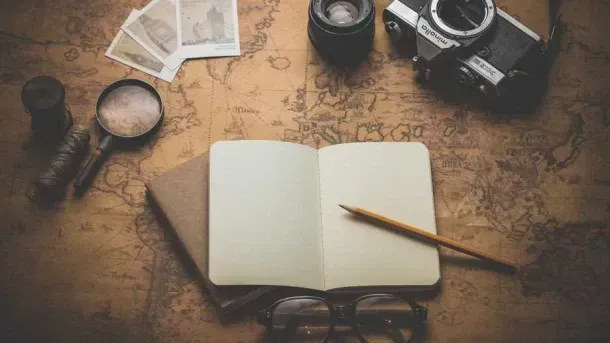The Most Impressive Buildings in Melbourne

An assortment of architecturally remarkable buildings sprawl throughout Melbourne’s urban jungle and enrich the lives of Melburnians. From the French Renaissance train station to the neoclassical state library and the Moorish Revival theatre, here are some of the most impressive buildings in Melbourne.
Flinders Street Station
Building, Train Station

State Library Victoria
Established in 1854, the State Library Victoria spreads across two acres and features seven reading rooms in which you can enjoy any of their more than 2 million titles. Two of the library’s most significant architectural aspects are La Trobe Reading Room and the Architectural Fragment, a sculpture just outside the library. Australia’s oldest public library is also home to numerous historical documents and artefacts, including the diaries of Melbourne founders John Batman and John Pascoe Fawkner, as well as the original armour worn by Victorian bushranger Ned Kelly.

GPO Building
Building

Shrine of Remembrance
Memorial, Shrine

Coop's Shot Tower
Museum

Preserved under The Glass Cone, Coop’s Shot Tower stands as something of a 50-meter time capsule, having been preserved and saved from demolition in 1973. The tower now sits amidst the retail hub that is Melbourne Central. Built in 1889, the tower has 327 steps leading to the top. It produced six tonnes of lead shot each week until 1961. Nowadays, there is a museum located on the second floor of the tower.
Melbourne Central Shopping Centre, La Trobe St. & Swanston St., Melbourne, VIC, Australia, +61 03 9922 1122

Melbourne Central Coop’s Shot Tower | © Kham Tran/WikiCommons www.khamtran.com
Royal Exhibition Building
Building, Museum, School

Designed by architect Joseph Reed, the Royal Exhibition Building was built to host the Melbourne International Exhibition in 1880. Neighbouring the Melbourne Museum in Carlton Gardens, this World Heritage Site held the opening of the first Commonwealth Parliament of Australia and was used as a venue for the 1956 Olympics. In 1980, Princess Alexandra granted the building its royal title, and today the space holds events, exhibitions and school exams.
Royal Exhibition Building, 9 Nicholson St., Carlton VIC, Australia, + 61 03 9270 5000

Royal Exhibition Building | © Douglas P. Perkins/WikiCommons
Eureka Tower
Building

Manchester Unity Building
Building

Old Treasury Building
Building, Museum

Designed by 19-year-old architect JJ Clark in 1857, the Old Treasury Building once held the fortunes acquired during the Victorian Gold Rush. Fashioned from bluestone and sandstone, the three-storey building is a primary example of Australian Renaissance Revival architecture. The building originally served as the home of the Treasury Department, but is now a museum with a number of permanent and rotating exhibitions.
Old Treasury Building, 20 Spring St., Melbourne VIC, Australia, +61 03 9651 2233

National Gallery of Victoria
Art Gallery

Federation Square
Building

Forum Theatre
Cinema

Formerly known as the State Theatre, this venue was the largest cinema in Australia when it opened in 1929 and had a seating capacity of 3,371 people. John Eberson designed the space as an atmospheric theatre with a Moorish Revival exterior and an interior ceiling that gives patrons the illusion of sitting under the Mediterranean night sky. These days, the Forum Theatre is used for concerts and events, including the Melbourne International Film Festival.
Forum Theatre, Flinders St. & Russel St., Melbourne VIC, Australia, + 61 03 9299 9860

Arts Centre Melbourne
Building


KEEN TO EXPLORE THE WORLD?
Connect with like-minded people on our premium trips curated by local insiders and with care for the world
Since you are here, we would like to share our vision for the future of travel - and the direction Culture Trip is moving in.
Culture Trip launched in 2011 with a simple yet passionate mission: to inspire people to go beyond their boundaries and experience what makes a place, its people and its culture special and meaningful — and this is still in our DNA today. We are proud that, for more than a decade, millions like you have trusted our award-winning recommendations by people who deeply understand what makes certain places and communities so special.
Increasingly we believe the world needs more meaningful, real-life connections between curious travellers keen to explore the world in a more responsible way. That is why we have intensively curated a collection of premium small-group trips as an invitation to meet and connect with new, like-minded people for once-in-a-lifetime experiences in three categories: Culture Trips, Rail Trips and Private Trips. Our Trips are suitable for both solo travelers, couples and friends who want to explore the world together.
Culture Trips are deeply immersive 5 to 16 days itineraries, that combine authentic local experiences, exciting activities and 4-5* accommodation to look forward to at the end of each day. Our Rail Trips are our most planet-friendly itineraries that invite you to take the scenic route, relax whilst getting under the skin of a destination. Our Private Trips are fully tailored itineraries, curated by our Travel Experts specifically for you, your friends or your family.
We know that many of you worry about the environmental impact of travel and are looking for ways of expanding horizons in ways that do minimal harm - and may even bring benefits. We are committed to go as far as possible in curating our trips with care for the planet. That is why all of our trips are flightless in destination, fully carbon offset - and we have ambitious plans to be net zero in the very near future.














